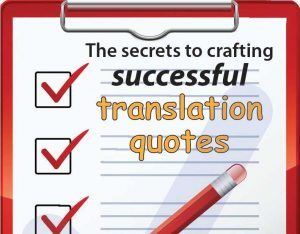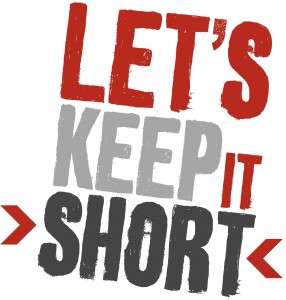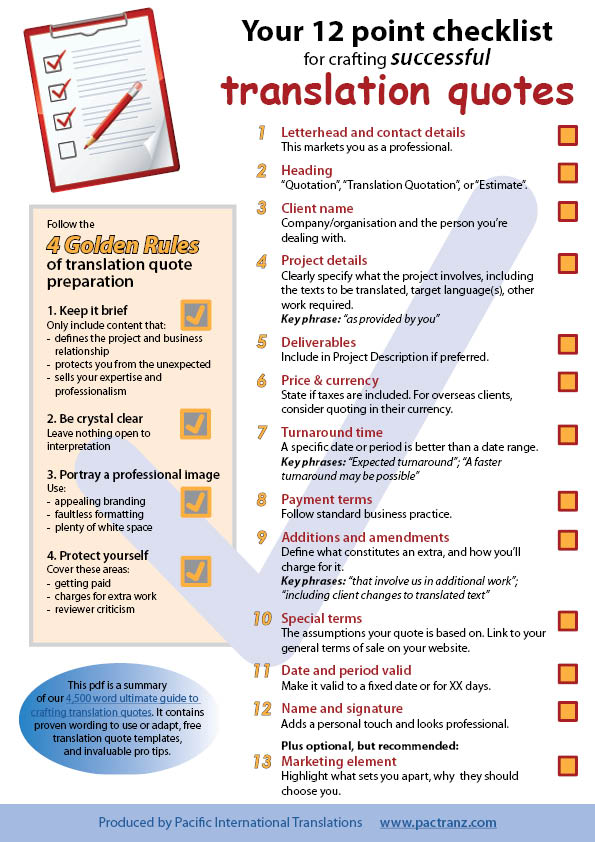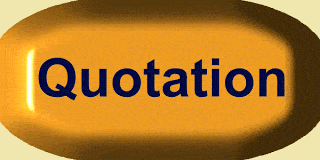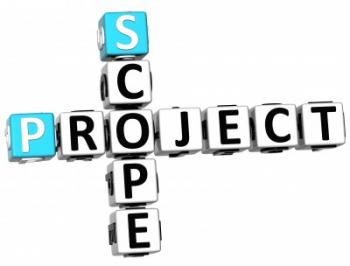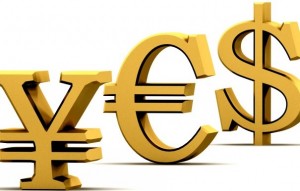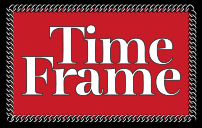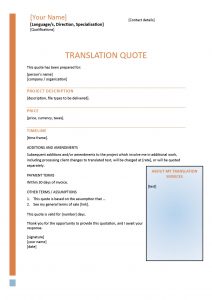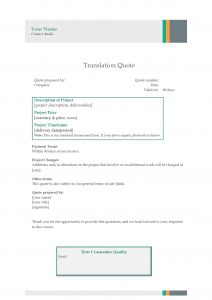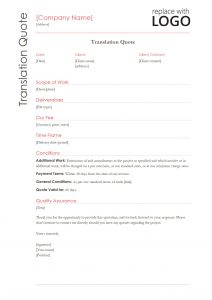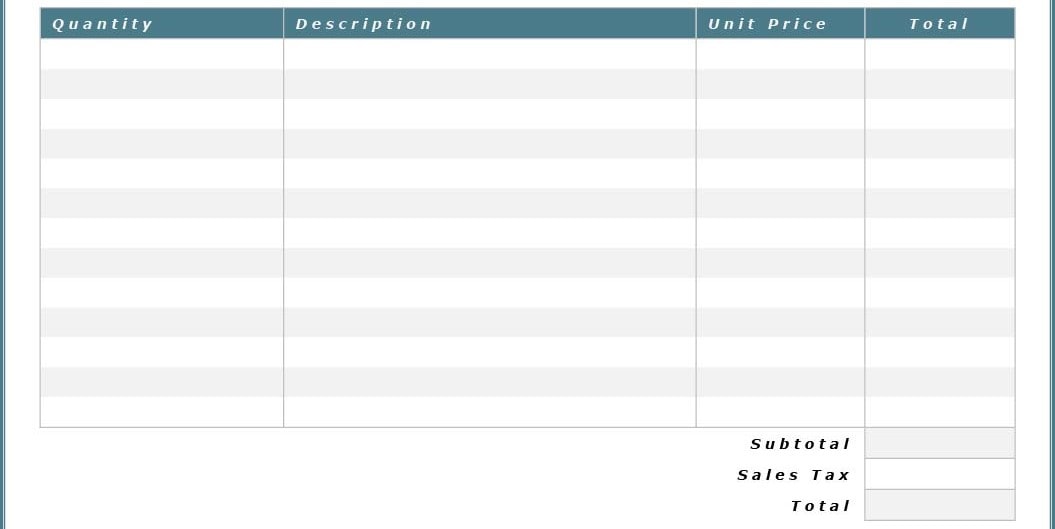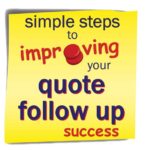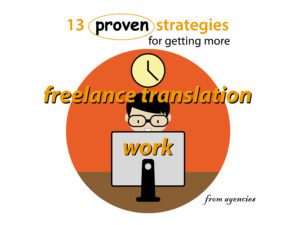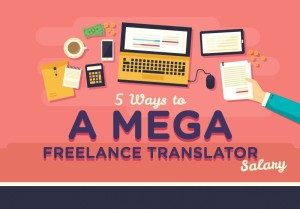I’m sure you’ll agree having a great template is important for creating successful translation quotes.
Well, the templates we have for you are perfect for the job as they’ve been designed especially for translators (and yes, that’s important).
But there’s something you really, really need to understand about your translation quotes:
If all your template does is provide a bunch of information …
… you’re almost certainly missing out on jobs you might otherwise get.
Why?
Because to be consistently successful, quotes also have to be carefully written, well-directed marketing – you need to actively promote your expertise and showcase your professionalism.
Sound a bit daunting?
No problem! This article gives you all the tools you need to do precisely that – and so increase your chances of landing more work.
This is what we have for you:
- A simple quote preparation framework – 4 golden rules to keep you on track
- A 12 point, easy-reference checklist of the key content every translation quote should have
- Free translation quote templates designed especially for translators
- Pro tips from our 20+ years of translation quoting experience
- Wording that works
Prefer the short version of the article?
This article is over 4,500 words long, but we have a one page summary with the 12 point checklist.
View the Summary & Checklist
Or jump straight to:
- 4 golden rules
- key content, wording & pro tips
- translation quote templates
But before we dive into the detail, I should first of all explain …
The huge benefit you’ll gain when you write translation quotes that are persuasive marketing
Let’s dispel a common myth right here.
If you thought clients are only ever looking for the lowest priced translation … you’d be wrong.
Way wrong!
Of course price is a big deal, and often your turnaround time too. And for some, your processes, technical expertise, etc will be important.
But there are two other additional factors that good clients (the ones we all want to get and keep) will also be weighing up when assessing your quote:
- Can you be trusted to produce a good translation?
- Are you going to be easy (professional) to deal with?
And make no mistake, these things are a big deal for good clients, often way more important than your price or time frame.
After all, they sure aren’t going to assign the translation of their important materials to someone whose proposal leaves them wondering …
And imagine your Mr Good Client comparing two essentially equal quotes, but where:
- one shines in its presentation, clarity and professionalism
- the other is bare-bones, dry and not particularly engaging.
It’s pretty obvious which one he’ll choose.
Simply put:
Translation quotes that aren’t also excellent marketing – that don’t broadcast loud and clear that you can be trusted to do a good job and will be great to work with – are going to be bypassed in favour of those that do.
4 golden rules that can help improve your translation quote writing success
- Keep it brief
- Ensure everything is crystal clear
- Portray a professional image
- Protect yourself
Let’s look at these.
1. Brief is Best – everyone’s in a hurry these days
Generally, the only specific information most clients want from your quote is:
– what it’ll cost
– when it’ll be delivered
They’re unlikely to care too much about anything else you have in there.
So including a whole bunch of extra information and/or terms and conditions is probably counterproductive:
– it may make it harder for them to find what they want
– they may begrudge the time involved in wading through your document
– they might conclude that getting a translation from you is somewhat complicated, not the simple process they were expecting.
Our experience
We prominently feature our translation turnaround time in our quote template. Yet time and again just after getting our quote, clients will ask how long it will take.
How come?
It seems they zero in on what they want to know, and little else registers. They were initially solely focused on price, and only afterwards got to thinking about time frames.
We recommend only including the “essentials” in your quote. By that we mean only content that:
- is necessary to define the work and business relationship
- protects you from the unexpected
- sells your expertise and professionalism
For everything you’re tempted to write or explain, ask yourself:
- what am I gaining by including this?
- could it be left out?
This should ensure everything in your quote has a specific purpose.
And that it won’t be too long. If it can fit easily on the page with plenty of white space, it’ll look clean, attractive, professional. Bingo!
Pro tip:
Include other stuff that’s important but not “essential” in a set of general terms of sale on your website, and link to these in your quote template.
2. Clarity is Crucial – leave no room for doubt
It’s vital you nail down exactly:
- what you’re agreeing to do
- what you’re going to deliver
- what happens if things change
A crystal clear project description will make it obvious when later changes and additions are “out of scope” and chargeable as extras. You need to be able to say:
My quote was to … and this doesn’t fall within that description, so …
Leaving anything open to interpretation is dangerous.
If your client assumes you’re going to do something you didn’t intend or allow for, and your wording isn’t clear one way or the other, what are you going to do? Do the work for free, or quote extra and risk annoying (and losing) your client?
An awkward choice.
Our suggestion:
Put yourself in the shoes of someone unfamiliar with translation and the translation process, and imagine what they might incorrectly assume from your quote.
Cover off these possible misinterpretations with unambiguous wording.
Precise, clear-cut wording brings another, possibly greater, benefit.
It sends a strong message you know what you’re doing and are professional in your business dealings.
Now that’s exactly the message good clients are looking for.
3. Look the Part – instill confidence with professional presentation
Here’s the best bit about quoting:
You’re marketing yourself to your (potential) client at the very time he’s ready to buy. The precise moment when your marketing efforts have the best chance of success.
What a great opportunity that is!
And it’s why there’s so much to gain from portraying the right image in your translation quote. An image that will assist and lead to the sale, not put doubts in your client’s mind.
For example:
A negative image:
| If your quote format looks: | your client might think |
|---|---|
| - a bit amateurish | your translation will be a bit amateurish too |
| - cluttered, busy, with a lot of content | dealing with you could be complicated |
| - full of legal terms and conditions | you could complicate things |
A positive image:
| If your quote looks: | your client might think |
|---|---|
| professionally formatted, with key information easy to find | you’re professional, easy to deal with and will do a great job |
Create the professional image you need by:
- Appealing branding
- Faultless formatting
- Plenty of white space
Source a translation quote template that allows you to do this – consider the samples we provide below. Or create your own.
4. Cover Yourself – in case events take an unexpected turn
Here are 3 areas where things can go pear shaped with translation projects, and you can write in some level of protection in your quotes:
Getting paid
The key is ensuring your fees or charge basis and your payment terms are clearly stated, so there can’t be any ambiguity or grounds for dispute.
Then when they don’t pay you on time, as some won’t, have a robust debt recovery process in place.
Charges for extra work
We think this is such an important issue for translation projects that we recommend including it as a specific clause in your quote template – see our No. 9 below.
Unfounded reviewer criticism
Protecting yourself against clients not wanting to pay, or wanting a discount, based on unjustified criticism of your translation, is more tricky.
One option would be to have a “pay first, and we’ll discuss issues later” type clause. But no client will be happy with that, and they’ll just ignore it anyway.
Worse, it’s terrible marketing, and won’t help you get the job.
You need to avoid any wording that may give the impression people often query your translations, or that you’re anticipating problems. That’s the opposite of presenting a positive image and promoting yourself as easy to deal with.
Instead, we advocate adding some subtle and fairly innocuous looking wording to your additions and amendments clause – see our Pro Tip below.
The 12 key elements you should write into every translation quote
View or download this checklist
1. Letterhead and contact details
We strongly recommend sending your quotes as pdf attachments to an e-mail cover letter, rather than in the body of an e-mail.
That way you can use a quote template in Word or a design program. These have greater design flexibility than e-mail applications, so your presentation can look more professional.
Having a smart, well designed logo and letterhead markets you as a professional. So someone who is likely to do a good job and will be professional to deal with, right?
Make sure to link to your freelance translator website, as potential clients will almost certainly check it out – see our article and checklist to ensure your site markets you appropriately and establishes your credibility.
2. Heading
Bear in mind your quote may be forwarded on to several people, be saved to the client’s system, or be printed out and lie around on a desk for a while.
It’s helpful if what the document is and who issued it is readily identifiable to anyone seeing it, without having to read through it.
So ensure your template is headed up as “Quote”, “Quotation”, “Translation Quote” or “Translation Quotation”. If you haven’t been given sufficiently specific project parameters, consider changing that to “Estimate”.
3. Client name
In addition to stating the client company or organization, we recommend adding the name of the individual requesting the quote.
This personalizes things a little, which may help strengthen your business relationship with that person. Or even get the job.
And in bigger organisations, having an employee name on the document can help with subsequent payment or process issues.
Caution:
Sometimes an individual or organization will ask for a quote on behalf of another organization.
Be wary of accepting their go ahead on the project if they’re not the ones paying for it.
I recommend getting confirmation from the end client that they accept the charges and will be responsible for payment, before starting.
4. Project details
Make sure you very clearly specify what the project entails.
This will:
- portray you as professional and organized
- help identify any incorrect assumptions or differences in understanding between you and your client
- make it clear when subsequent client requests are additional or outside the project scope
Specifically, you should spell out:
- The precise texts, documents or materials you are to translate
- The target language(s)
- Any other processes or work involved
- If necessary what isn’t included but your client might assume to be
Pro tip:
We’ve all experienced quoting for a document, only to find when the client finally goes ahead the document is longer.
Consider using the phrase “as provided” or “as supplied by you”, or even “as provided by you on [date]” in your project description to nail down exactly what text you’re quoting on.
You can then easily go back later with an amended quote if the document is longer.
2nd Pro tip:
When this happens, rather than submitting an amended quote and waiting for that to be approved, consider sending an e-mail like this:
Thanks for the go ahead [name], and the job is underway.
This final document was longer than the one I quoted for so that will affect my charge, which will now be XX.
You should expect the translation from me on [date].
Best regards,
This is a classic “assumptive close” sales tactic where you assume the client has already agreed to the new price.
You’re making it a little awkward for them to say no, and much easier to just do nothing or confirm the new price.
That said, we do tend to wait a bit before starting the job. Just in case the client bursts a boiler at the new price and cancels the job or puts it on hold.
5. Deliverables
It pays to specify the type of file you’ll be delivering – just in case your client gives you a Word file, but somehow expects something else back.
You can tack this on to your project description rather than have a separate section in your template if you prefer.
For some projects you may also want to specify formatting or layout. Again just to pre-empt the situation where the client is expecting something different to what you understand.
6. Price & Currency
Price
Your price will likely be one of the main things your client will look for.
So we favour making it stand out in your template.
You could:
use a larger point size
make it a different colour
use bolding, etc.
Make sure to say whether and which taxes are included.
If you’re giving a discount, spell that out:
This price includes a XX% discount due to there being some repeated text
As a valued client we have applied a XX% discount to our standard rates
This tells your client he’s getting a great deal.
Which in turn means:
– they’ll be less likely to try and knock you down on price
– it’s easier for them to justify accepting your quote as is
– they may see less need to get other quotes and compare
Currency
Generally, just the currency symbol will be enough.
However be aware the $ symbol can sometimes confuse. It is used for the peso in several Latin American countries and there are many different dollars. Particularly watch USD / CAD, and AUD / NZD.
Pro tip:
Some clients aren’t set up to make payments in a foreign currency, and others perceive it as too difficult. So they’ll reject any quote not in their currency.
For overseas clients, consider quoting in their currency. If you’re not sure, ask them which one they’d prefer:
Thanks for your request for a quote, and we’re working on that now.
However could you confirm which currency you’d prefer to pay in so we can quote in that?
(Note the assumptive close – you’re already discussing how they’ll pay you!).
Of course this does mean you assuming any currency exchange risk between quoting and receiving payment.
2nd Pro tip:
Don’t rely on an on-line calculator like Oanda to convert between currencies.
You can be pretty sure your bank will use a less favourable rate than that, and may well also hit you with other admin type fees.
We recommend using your own bank’s calculator or “buy” rates. Then round your figure up to cover any additional fees they’ll be charging you.
7. Turnaround time
As this is another of the key things your client will be looking for, we recommend also having this stand out in your template, like your quoted price. Including these two together in a box is an option.
Some issues to consider:
A specific period or a range?
You can give:
- a definite delivery time/date: “by 5pm [Date]”
- a number of days: “5 working days”
- a range: “4 – 6 working days”
Naturally, clients much prefer a definite time frame over a range. So if you can pretty much guarantee it and are happy committing to it, I’d recommend being specific.
On the other hand a range builds in some leeway for you, so is safer where there’s a chance things may not go entirely to plan. But it’s less compelling for your client.
Also be aware clients will often interpret a date range differently to us:
Perceptions of a turnaround of “4 – 6 days”
– 4 days is possible if the stars align and everything works perfectly
– 5 days is fast
– 6 days is normal (good service)
– 4 days is expected
– 5 days is OK but a bit slow
– 6 days is slow (poor service)
Not ideal!
If committing to a specific delivery time, you’ll probably want to add:
providing we receive the go ahead by [date/time].
Pro tip:
Getting a go ahead 2 minutes after you start work in the morning is quite different to getting it 2 minutes after you’ve stopped work for the day. But it is the same day.
To avoid losing a working day, or part of it, consider excluding the date of the go ahead from the time frame:
X working days, not counting the day the go ahead is given.
Comfortable or tight?
Consider two extremes with setting project delivery time frames:
- Risk-taking Mad Marketer quotes the tightest translation time feasible, and pushes to ensure it’s met. He figures quoting a quicker turnaround than competitors will win jobs he wouldn’t otherwise get, and the risk of occasionally missing a deadline is worth taking.
- Cautious Legal Beagle sees missing a deadline as a calamity, so always builds in a healthy safety margin. She sees her reputation for reliability as sacrosanct, and if her more cautious time frames mean missing out on some jobs, so be it.
You’ll need to find your or your company’s happy spot along this continuum.
If you find you’re missing deadlines quite often (or quality is suffering), you may want to ease up a bit.
Conversely, if your longer delivery times mean you’re missing out on jobs, you may need to be more competitive – or use the following tips.
Pro tip:
If you prefer quoting a more comfortable time frame, consider adding wording such as this:
A faster turnaround may be possible – let us know if you have a specific deadline.
This is our standard turnaround time. If your job is urgent, please let us know.
This tells the client the timing you’ve given isn’t set in stone, so lessens the likelihood they’ll immediately reject your quote because they want the translation quicker.
It leaves the door open for you to still get the job by agreeing a shorter time frame.
2nd Pro tip:
Consider calling it an “Expected” turnaround or time frame. This gives you an out if needed –
XX happened, which we weren’t expecting and will delay things slightly. We’ll deliver by YY.
But don’t use the word “Estimated”. It sounds too vague, that you could take quite a lot longer and wouldn’t see that as a concern.
Worse, it may give the impression you don’t know how long it will take – ie, you’re not a pro on top of your game.
3rd Pro tip:
Consider adding a proviso or qualification if you’re basing your quote on something you fear may change later. Eg:
Pricing is indicative only, to be confirmed when the final files are available.
This price assumes XXX. If this is not the case, the fee may change.
8. Payment terms
You could include these in your general terms of sale and link to them.
But we consider it preferable to write them directly into your quote, because:
– It helps with debt collection when you can say:
our quote specifically mentioned our payment terms, and by accepting the quote you agreed to those terms
– It gives your client no excuse for saying he didn’t know what your terms were
We also recommend adopting the payment terms that are standard business practice in your country. Typically, that will be within a specific number of days or by a certain day of the month.
Being out of step with standard practice can make you look inexperienced in business, or potentially more complicated to deal with.
Companies will invariably have set dates and processes for payment, and many can’t easily (or more accurately, won’t) change those just for you.
Of course, most clients will simply ignore whatever you state as your payment period and follow their own timetable anyway. But occasionally you’ll get a conscientious client employee who’ll take them seriously, and may be put off by non-standard terms that don’t fit with their processes.
Having stock standard terms in your template avoids this possibility.
The big exception
If your client is an individual, we recommend not giving any credit at all and collecting payment in full before you begin.
This avoids a whole swag of potential hassles.
9. Additions and amendments
We recommend including a clause specifically addressing charges for “extras”.
If you don’t view this as an essential, you can add it to your general terms of sale rather than your template.
But because for us it crops up so frequently with translations, we prefer a specific clause in the quote itself. That way clients can’t claim they didn’t know about it.
As always, clarity is key. Your clause needs to:
– clearly define what constitutes an extra
– say how it will be charged
Pro tip:
Clients can potentially be put off if your wording is too broad. They can think:“Who knows what they’ll label as ‘additional’ and want to charge us for.”
So consider adding the phrase:
that involve us in additional work.
That’ll reassure them, and of course is clearly reasonable.
Possible wording:
Additions and alterations to the project that involve us in additional work will be charged at …
Additional work beyond the scope of the project as quoted, will be either quoted separately or charged at …
Pro tip:
You may wish to specifically cover the scenario where you have to spend time on client reviewers’ changes.
If so, we suggest adding this phrase to the above wording defining additional work:
.., including incorporating or assessing client changes to translated text,
10. Other/Special Terms
This is where you can link to your general terms of sale on your website.
Any other processes, requirements or client undertakings essential to the project and your proposal can also be specified here.
It’s also a good idea to specify here any assumptions your quote is based on that you think may change:
This quote is based on the assumption that XXX. Should this prove not to be the case, our quoted price and/or time frame may change.
This quote has been prepared on the basis of the e-mail of [date] from XXX. Should those parameters change, we will need to revise our quote accordingly.
An alternative if these things are bulking out the quote too much is to move them to your covering e-mail, and reference that here:
This quote has been prepared based on the assumptions outlined in my e-mail of [date] to XXX. Those assumptions are integral to this quote, and should they not eventuate we will need to re-evaluate.
11. Date and validity
Date
To me, any quote without a date is unprofessional – but it’s far from uncommon.
Don’t run the risk of some stickler (like me) gaining a negative impression by omitting the date.
And watch using a date field in Word – make sure your template doesn’t update to today’s date every time it’s opened.
Period valid
Clients can take many months to decide to go ahead with a quote. In that time your circumstances might change or rates go up, so you’d now quote the project differently.
To cover this, we suggest your template state the quote will be valid for a specific period only:
Quote valid for 30 days
This quote is valid for 60 days from date of issue – reconfirmation will be required after that period.
Alternatively, make it valid to a fixed date.
12. Name and signature
People like to deal with individuals, not faceless organizations.
So personalizing your quote by including your name, job title if relevant, and signature in your template can make a big difference.
I’d suggest scanning your signature and adding it as a digital image.
Also, if you have a company seal and these are habitually used in your country, consider scanning and including that as well. It adds a professional touch.
That’s it, your 12 point checklist to ensure you compose translation quotes that have the right content.
But wait, there could well be more …
Remember we said that when clients are assessing your quote they’re looking for assurance:
– you can be trusted to produce a good translation
– you’re going to be easy (professional) to deal with
Well, if you follow the guidelines and tips outlined here you’ll have gone a long way towards ticking these boxes. Especially that you’re professional and will be a great translation partner for your client.
But have you done enough to convince on the first point?
We see this as so central to the success of your quote that we recommend having an additional 13th element in your template designed specifically to ram this message home:
13. Marketing component
The objective here is simple:
… to convince your client you know what you’re doing and will produce a great translation.
One option is to have a specific “Why choose us” or “What you’ll get from me” section in your template.
Or it could be incorporated into your name and signature text, or your logo/branding, or in a footer.
It doesn’t matter where or what, as long as it’s effective, and looks professional.
What to say
You should highlight the key features of your service offer, what sets you apart, your USP.
Freelance translators will find our discussion of featuring your strong point in your CV useful for this.
By all means use a bit of marketing flair here – it shows you’re confident in your expertise and service.
But don’t overdo it – you don’t want your super slick wording being perceived as marketing fluff lacking substance. That would have the opposite effect to what you’re trying to achieve!
If you systematically collect client testimonials (you should! – see a simple way of doing that here), consider adding some here – it will add credence.
And a bit of design flair is definitely beneficial. A template with an appealing design tells your client you care about appearance and value quality.
So it follows you’re likely to care about translation quality too, right?
Pro tip:
You don’t want this key message lost on the page, so make it stand out.
Use a box to grab the attention, perhaps. Or colours, bolding etc.
Whatever it takes to ensure it won’t be missed.
Free Quote Templates designed specifically for translators
Here are 3 proven translation quote templates designed specifically to include the key elements every translation quote should have.
That is, they’re designed not only to provide the required information, but also protect you from the most common adverse scenarios that arise with translation projects, and most importantly … project your professionalism and expertise.
These are Word documents that you can download and edit to your specific needs.
(Click the images to preview)
Download Translation Quote Template 1
Download Translation Quote Template 3
Download Translation Quote Template 2
We recommend avoiding generic type templates with a format that includes something like this:
That might work if you’re selling your services by the hour, or for supplying physical items:
XX widgets @ $YY per unit = $ZZ.
But for a translation quote template this sort of format isn’t really very suitable, for three reasons:
- we need to discourage the idea we’re selling a commodity – words, lines of text, pages, etc
- the other information we need to include doesn’t fit too well
- it’s hard to incorporate the marketing component
They won’t do you any favours!
Conclusion
Translation quotes aren’t just information – they’re also marketing.
And getting these marketing aspects right is crucial if you want your quotes to be successful.
The guidelines, wording, templates and recommendations presented here will help you achieve that.
That’s because they’re designed to produce quotes that convey two key messages:
– that your translations will be great
– that you’ll be professional and easy to deal with
For the type of clients we all want to have, these are hugely influential factors in who they select as their translation partner.
They’re all designed to help freelance translators with the practical side of being in business!
We’ve got great tips for your website, cv, setting your rates, dealing with agencies and a whole lot more.
Check them all out on our translator tips and resources page.
Or start with these:
The smarter, more effective approach to quote follow up
13 proven strategies for getting more freelance translation work from agencies
5 ways to earn a monster freelance translator salary

